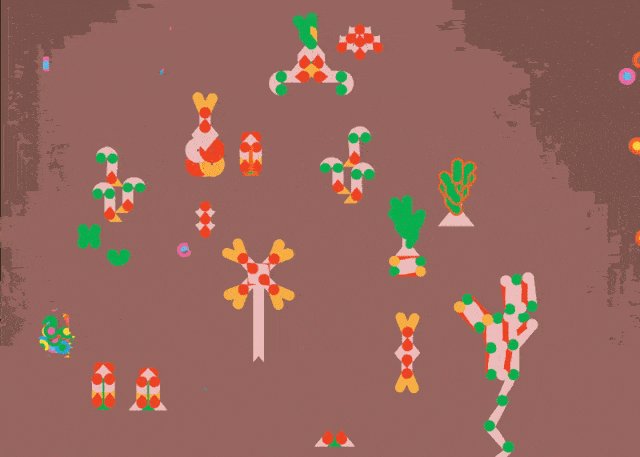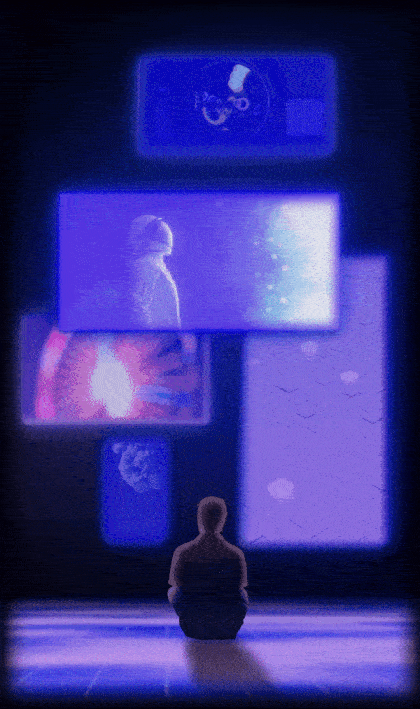We recently connected with Lily Yeh and have shared our conversation below.
Alright, Lily thanks for taking the time to share your stories and insights with us today. Earning a full time living from one’s creative career can be incredibly difficult. Have you been able to do so and if so, can you share some of the key parts of your journey and any important advice or lessons that might help creatives who haven’t been able to yet?
My creative journey started when I studied New Media Design at Shih Chien University in Taipei, where the education was hands-on and rooted in a Bauhaus-inspired philosophy. In our first year, we weren’t even allowed to use computers—we built large-scale installations, experimented with materials, designed costumes, and performed movement-based pieces. At the time, I didn’t fully understand it, but that experience taught me to think across mediums—2D, 3D, motion, interactive—and gave me a strong foundation in visual storytelling.
After graduating and founding a new media design studio, I came to LA to earn my MFA in Graphic Design at CalArts, which helped me refine my creative voice, deepen my understanding of design theory, and expand my network. That chapter matured my practice and opened new doors professionally.
Today, I run a design studio in Los Angeles. What sets me apart now, compared to my early years as a freelancer, is that I no longer think just as a designer, but rather approach each project like a creative consultant. I always begin by asking: What is the real problem we’re solving? Rather than simply delivering visual assets, the aim is to provide strategic solutions. My studio Red Dust is helping clients translate abstract, brilliant business ideas into clear, engaging communication that resonates with their audience.
It wasn’t an overnight journey, but I wouldn’t change the pace. Each step has shaped the perspective and voice I bring to my work today.
This fall, I’m also returning to school—this time as an educator—to teach motion design. I’m incredibly excited for the opportunity to share what I’ve learned with the next generation of designers and to grow alongside them in the classroom. Teaching feels like a full-circle moment in my journey, and I can’t wait to contribute to the same creative energy that shaped me.


As always, we appreciate you sharing your insights and we’ve got a few more questions for you, but before we get to all of that can you take a minute to introduce yourself and give our readers some of your back background and context?
I started out as a freelance designer working on motion design projects—some of my earlier work included animations for the Taiwanese Ministry of Education’s online learning platform as well as creating business-to-business pitch videos for large US-based clients like Ashley Furniture, 7-Eleven, and Whiteclaw. These early experiences helped me realize how much I enjoy translating ideas into engaging visual narratives.
Today, I run Red Dust LLC, a creative design studio focused on helping clients visualize their stories and craft a strong, cohesive brand identity. One of my ongoing clients is the tech media company PCMag. I collaborate closely with their internal creative director to refresh and expand the brand’s visual language—this includes updating their brand book and developing consistent design assets like banners, series logos, and visual templates. The goal is to create a recognizable identity across platforms, so that when someone sees a PCMag article, the hero image alone communicates the brand. This involves setting design guidelines for color, texture, composition, and photographic direction to ensure consistency and elevate the overall user experience.
Beyond large clients, I also love working with small businesses—building tailored brand books and mockups that speak directly to their needs. Another specialty of mine is pitch deck videos. I previously worked with a fintech venture capital firm, producing B2B proposal videos for AI platforms and crypto products. These acted as concise, visual elevator pitches—covering everything from storyboard and styleframes to full animation production. Over time, many of the entrepreneurs I’ve worked with have returned for new collaborations, and I’ve come to see this as a niche where motion design can truly make emerging ideas shine.
What sets me apart is my ability to blend thoughtful storytelling with vibrant, dynamic design across 2D, 3D, motion, and brand systems. I care deeply about creating work that not only looks great but also functions powerfully for the people and stories behind it. I’m most proud of the long-term relationships I’ve built with clients and the creative growth we’ve achieved together.
For potential clients and collaborators, I want you to know that Red Dust is more than a design studio—it’s a creative partner that brings your ideas to life with clarity, care, and a touch of magic.


For you, what’s the most rewarding aspect of being a creative?
For me, the most rewarding aspect of being an artist or creative is the way creativity becomes a tool for problem-solving in everyday life. Whether it’s how a street sign is designed or how an artwork is displayed in a museum, I find myself instinctively analyzing why it looks the way it does and how it communicates.
One book that really shaped this perspective is How to Use Your Eyes by James Elkins. Written in 2000, just before the world fully shifted into the digital era, it’s a beautiful reminder that observation is an active skill. It invites you to look deeper at the overlooked—from parking lots to paintings—and find systems, meaning, and design in the mundane.
In today’s world, especially in the age of AI, this kind of attention feels even more important. While AI accelerates production and efficiency, design still carries the role of thoughtful interpretation and storytelling. I believe that being a creative means providing not just solutions, but clarity—translating complexity into something human, emotional, and engaging.


What do you think is the goal or mission that drives your creative journey?
As a multimedia designer working across both the U.S. and Taiwan, my mission is to be a cultural bridge connecting talent, context, and creativity between the two regions. I’m constantly looking for ways to collaborate on projects that require an understanding of both cultures, merging their distinct nuances into something contemporary, something that offers a fresh perspective in today’s fragmented visual dialogue.
My creative journey is shaped by a fascination with how design can be a form of storytelling that blends not only media but also meaning. I love experimenting with mixed formats and drawing from everyday visual vernaculars—be it the mundane street signs of Taipei or the layered graffiti of Los Angeles—and transforming those textures into something that feels like my own visual language.
Back in grad school, my research focused on Taiwanese history, which is layered with shifting colonial influences—Dutch orange, Qing dynasty yellow, Imperial Japanese red—all woven over an ancient foundation of Indigenous aesthetics. I studied how these influences shape our cultural fabric and sought to define a visual identity rooted in that complexity. As a designer, I wanted to build a framework for exploring color, form, rhythm, and atmosphere that captures this multidimensional heritage.
Now, I find myself cultivating that same kind of research through my lived experience in the U.S. I’m curious about the patterns, contradictions, and quiet beauty within American culture—and how those layers interact with my own background. My goal is to keep exploring and experimenting, in hopes of building a design language that reflects both sides of who I am and brings something new to the table.
Contact Info:
- Website: https://lilyhailyeh.design/
- Instagram: https://www.instagram.com/lilyhailyeh/
- Linkedin: https://www.linkedin.com/in/lilyhailyeh/
- Other: https://www.canva.com/design/DAGVwwu8ajE/9FKBMd9j3EJUK61wRufk-w/watch?utm_content=DAGVwwu8ajE&utm_campaign=designshare&utm_medium=link2&utm_source=uniquelinks&utlId=h235241a583


Image Credits
1 | F2P Rebranding
Client: Farm2People | Design: Lily Yeh
2 | Kyshka Branding
Client: Kyshka | Design: Lily Yeh
3 | PCMag Editorial Design
Client: PCMag | Design: Lily Yeh | Creative Director: Viva Tung
4 | CalArts Store Vinyl
Institution: CalArts | Design: Lily Yeh | Creative Director: Stuart Smith
5 | CalArts Mayhem Festival Branding
Institution: CalArts | Design: Lily Yeh | Creative Director: Stuart Smith
6 | CalArts Holiday Card
Institution: CalArts | Graphic Design: HandBuilt | Motion Design: Lily Yeh
7 | PCMag Rebranding
Client: PCMag | Design: Lily Yeh | Creative Director: Viva Tung
8 | CNET Cover Story
Client: CNET | Design: Lily Yeh | Creative Director: Viva Tung
⸻


